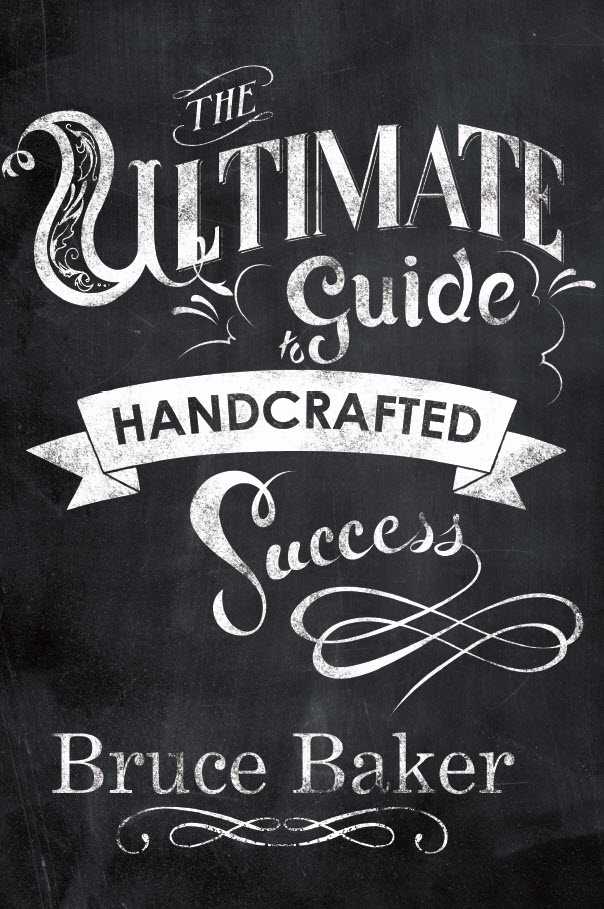
Selling at shows or in galleries revolves around three things:
• Impeccably crafted, creative and innovative products designed to be “on trend” and developed to fill customers’ needs sell well. Products have to be the right look, scale, color, weight and an entire list of other criteria to make them desirable.
In this current business climate, functionality, be it real or implied, is a big factor in what people are buying. You are more likely to sell a customer something in this era if it has a use. If that use is only to make the customer feel good, it must be made obvious to them.
• You must be a good salesperson to make the most out of any sales venue. So many sales are blown in the greeting stage because artists don’t know how to sell their work. Sales are a language-based skill—when you learn to use effective language when selling, your sales volume will increase.
• The third element in the trinity of a sale is visual merchandising. Creating displays that capture the customer’s attention, draw them into your space and sell your work is the objective! This third element is the focus here. How does one create compelling displays without spending a lot of money? When it comes to displays, it isn’t about how much money you spend, but rather about how creatively you showcase your work.
I always find it so interesting that as creative as artists are with regard to designing their work, when it comes to displaying it, they often take the easy-street approach. Many say, “I am just not good at display,” and give up. If you use shows to market your work, display is a part of your job. Currently, I am seeing a movement where artists are buying commercially available display systems that can be quick and easy, but the net result is that too many booths look exactly alike. This makes it hard for the customer to distinguish what is compelling about your product line, and makes it hard for you to build a recognizable brand.
When customers see you at a show, the visual of your booth should be the projection of a recognizable look—a brand identity. When customers see you at the next show, there should be a connection and memory of your display, your work and your image. I am not criticizing commercial displays or the use of them, this approach is right for some. However, the displays that I see grabbing the attention of customers are almost always custom-made.
Displays that employ conscious design decisions that work with the product line go a long way to create that special look—one that will resonate with customers. Effective custom-built displays not only create a mood and look that is unique to your line, but they also clearly distinguish you from your competition. Good design in your display will result in a sales tool that works for you, your customers and your product line better than any commercially available display.
By using careful and creative display solutions, you can save a lot of money compared to commercially available displays. Do not be afraid to use the same creativity in designing your booth as you use to create your work. If you are daunted by how you will build it, get someone to build it for you.
The first rule is that the display must work with the merchandise and vise versa. Plus, the display must speak to your ultimate customer who will buy the product. Sales will suffer if the demographic you are trying to sell to cannot relate to your colors or even the look of your booth. Keep in mind, your display should stimulate the senses.
The visual sense of your display needs to be one that will draw customers in to your space. Meaning, they will cross that imaginary line between the aisle and the front of your booth. The second sense that needs to be tweaked is the sense of touch. When your displays prompt your customers to touch something, you will see a spike in your sales.
An effective booth must get the customers to stop, take notice and be drawn into your space. When they do come in, something has to hold their attention and get them to touch the products. Your well-honed sales skills should take over at this point and, if you are effective, you will close a sale.
Too many booths send the message “look but do not touch.” Or sometimes things are displayed in such a way that the message is sent that you shouldn’t touch—key among these are shelves that are too deep, tables that are too wide and if the product line is out of easy reach. In most cases with commercial systems, you cannot determine the depth of a shelf (they mostly come as one size fits all).
Custom displays (ones designed by you) have so many advantages over commercially available systems. Realize that first of all, display isn’t “rocket science”—that is really all you need to know to empower yourself to be a display designer. If you go to a couple shows, stores or galleries and observe what creates visual magic, you will realize that you have what it takes to be a display designer. By analyzing your findings and asking a few questions, you will determine what works and what doesn’t. Then, reinterpret all your observations into a design that works for you, your product line and your customers—one that helps you build your brand.
About the Author: Bruce Baker is a Senior Columnist for The Crafts Report. This post is an excerpt from the article, “10 Tips for Creating a Custom Booth on a Shoestring Budget,” which appeared in the April 2010 issue of The Crafts Report. To read the entire article, contact Jack at (800) 331-0038, ext. 124 to buy this issue.







